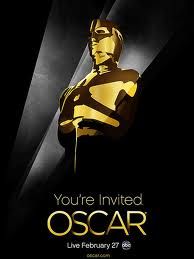“Punting the Pundits” is an Open Thread. It is a selection of editorials and opinions from around the news medium and the internet blogs. The intent is to provide a forum for your reactions and opinions, not just to the opinions presented, but to what ever you find important.
Thanks to ek hornbeck, click on the link and you can access all the past “Punting the Pundits”
Dean Baker: Right to Work: Representation Without Taxation
Part of Wisconsin Gov. Scott Walker’s union-busting agenda is including a “right to work” rule for public-sector employees. Several other Republican governors are considering similar measures for both the public and private sectors. Insofar as they succeed, these right-to-work measures will seriously weaken the bargaining power of workers.
“Right to work” is a great name from the standpoint of proponents, just like the term “death tax” is effective for opponents of the estate tax, but it has nothing to do with the issue at hand. It is widely believed that in the absence of right-to-work laws workers can be forced to join a union. This is not true. Workers at any workplace always have the option as to whether or not to join a union.
Ari Berman: Civil War in the GOP? Top Republican Supports Government Shutdown
Last week National Journal asked Democratic and Republicans “insiders” in Washington whether a government shutdown would be in their party’s best interest politically. Fifty-six percent of Democrats said yes, while 65 percent of Republicans said no.
Tim Pawlenty, the ex-governor of Minnesota and likely 2012 GOP presidential candidate, evidently is not one of those Republicans. In an interview with Think Progress over the weekend after his speech at the Tea Party Patriots summit in Phoenix, Pawlenty welcomed the idea of an imminent government shutdown.
Greg Mitchell: When ‘The Age of Wikileaks’ Began, One Year Ago, With ‘Collateral Murder’
Exactly three months ago, I started live-blogging when a major story broke, as I’d done previously in a few cases. But a funny thing happened with WikiLeaks’ “Cablegate” release: The story, and the reader interest, did not go away after a couple of days-as the cables kept coming out, the controversies spread, and Julian Assange became a household name in America.
One week passed, then another. I started labeling it The WikiLeaks News & Views Blog and giving it a number, e.g. “Day 20.” Then “30.” Echoing the early days of Nightline during the Iran crisis in the late-1970s, I wrote that like America then I was being held “hostage.” Now it’s day 93 and counting.
But with the arrival of March, another marker to note: It’s now been a year since WikiLeaks began processing a massive leak, for which Pvt. Bradley Manning, in his Quantico cell in near-isolation, stands accused.

 On this day in 1961, President John F. Kennedy issues Executive Order #10924,
On this day in 1961, President John F. Kennedy issues Executive Order #10924,  The
The 

 DNA was first isolated by the Swiss physician
DNA was first isolated by the Swiss physician 
 On this day in 1827,
On this day in 1827, 
 I’m not sure about the rest of you, but I need a break from reality, at least for a few hours. The chance to sit in front of the big tube with a drink and a bowl of popcorn or other finger food and watch the glitz and glamor as the Stars walk down the red carpet and make fools of themselves bumbling the lines of acceptance speeches.
I’m not sure about the rest of you, but I need a break from reality, at least for a few hours. The chance to sit in front of the big tube with a drink and a bowl of popcorn or other finger food and watch the glitz and glamor as the Stars walk down the red carpet and make fools of themselves bumbling the lines of acceptance speeches.

Recent Comments